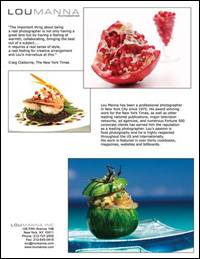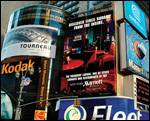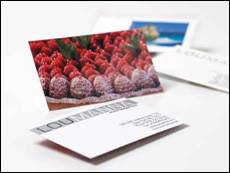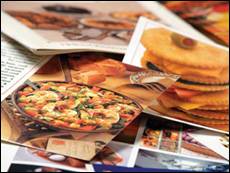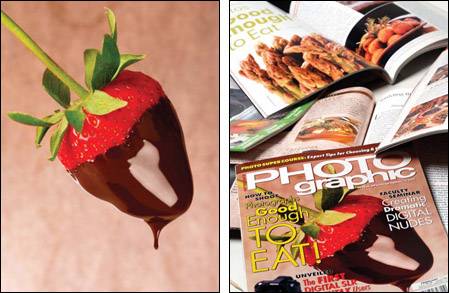Marketing Yourself to Clients and Agents
| Often, people suggest writing a business plan. This will help you focus your goals, energy, and passion in a clear, concise manner. You should view this task as a small-business marketing plan that really represents who you are and what you have to offer. It should include your products and services and who your prospective clients are. This will help you define and narrow your target market. Updating it often and revising it as necessary will keep you on track. Looking for business is not a dress rehearsal. Start with your circle of friends and associates to help generate assignments and business leads. Most of them will be happy to help you, if you ask. Don't be afraid to get out there and network. Meet and greet prospective clientssuch as restaurateurs, members of community groups, and members of local photo clubs and associationsevery chance you get. You'd be surprised how eager people are to help. Whatever you do, don't close the discussion without leaving them something in hand. This could be a promotional piece or photo postcard that shows samples of your work and clients. You always want to leave potential clients and people you meet with something to remember you by. Tip Try to tap into networking sources such as culinary schools, trade shows, conventions, galleries, photo clubs, professional organizations such as ASMP (American Society of Media Photographers), and photography classes and seminars.
Your business card is one of the simplest, least-expensive forms of advertising you can do. It makes a definite impression. Remember, you want the people who receive them to have a lasting positive image of youyou only have one chance to make a first impression! If you are not certain about what effectively communicates your skill, consult a graphic designer. Ask friends if they know of any. You'd be surprised how little this costs compared to how much return on investment you'll receive. I cannot stress how important this step is in setting up your business. Postcards featuring some of your best work are also great for sending announcements, greetings, and reminders to clients. In addition, a monthly e-mail postcard is an effective way to keep in touch with clients and prospective customers. Tip I have always found that putting a great, colorful, visual image on my card makes it stand out and helps people remember meas well as identify me as a food photographer. In addition, there are a number of other simple advertising and self-promotion vehicles that almost any photographer can use. My Web site has proven to be one of the most lucrative investments I have ever made. This online portfolio has exposed my work to potential clients around the world. I approached the design of my Web site the same way as my photographysimple and clean. There are many desktop-publishing tools, such as Microsoft Publisher, that enable you to create your own sites. Many Internet service providers offer these tools as well. But, there is nothing like a great designer to help you improve your image. My designer, Eric Steinhilber, helped me create a user-friendly and eye-catching layout that really meets my needs. Finally, don't miss any opportunities to promote yourself and your work in local newspapers and trade publications. You can write articles about your work and technique for photography newsletters and magazines. Don't forget to ask for reprints, which can be sent out as promotional pieces. In fact, the publisher of this book contacted me as a result of articles about my work in photography magazines, and one that I had written for Digital Imaging magazine. I also give seminars, workshops, and lectures about digital food photography in various venues. Tip Major professional societies offer sources of ideas for successful self-promotion. For instance, the ASMP has a series of articles written by photographers in its member publication, ASMP Bulletin, and also on its Web site (www.asmp.org). In addition, there are many listing services, such as Find a Photographer, and online forums where photographers can ask questions and receive answers. Two of the most useful, APAnet and APAdigital, are sponsored by the Advertising Photographers of America (APA) and hosted by Yahoo. Another online forum, specifically for emerging professionals and also hosted by Yahoo, is ASMPproAdvice (http://groups.yahoo.com/group/ASMPproAdvice). To sign up, visit groups.yahoo.com and use the search function. Representatives and agents provide marketing services and contacts for professional photographers. They promote photographers by circulating portfolios to advertising agencies and marketing firms, and handle a wide range of negotiating, billing, and professional services. Typically, agents charge commissions of 25 percent of the photographer's total fees. Although they tend to represent established professionals, they also are on the lookout for new talent. It takes time and hard work to build up a client base. Remember that fair business practices, meeting deadlines, understanding client needs, and going "above and beyond" the call of duty are vital in maintaining good relationships. One happy client will lead to more; for many years my business has been based almost entirely on referrals. |
